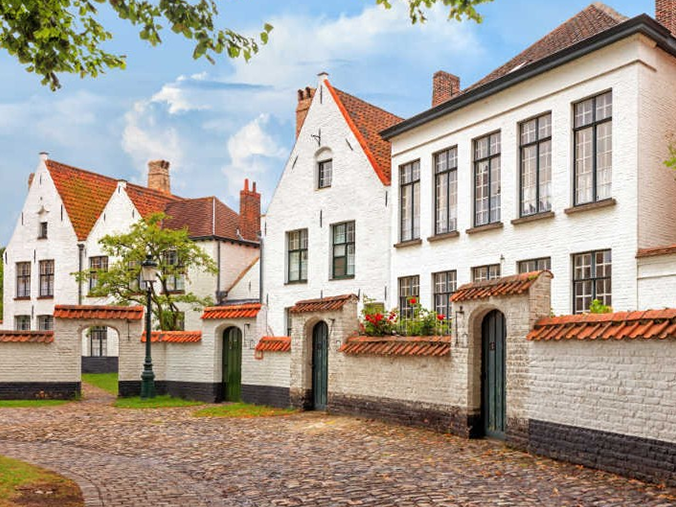Life in a Beguinage
At the beginning of the movement, Beguines lived alone or with their families. As the movement became popular due to its religious orientation and common-sense approaches to life for women in times of great change, the Beguine Movement spread rapidly. By the end of the 13th century, nearly one million women identified themselves as beguines, and most lived in residences called convents, beguinages, begijnhofs, or Gotzhausen [8].
Due to increased needs for security to protect their members and way of life, the beguines developed housing communities that conformed to local architecture. Communities in Germany erected convents and cottage groupings for small numbers of beguines, while beguines in Belgium, Flanders, and the Netherlands constructed rowhouses. In northern France, large convents were built that housed up to 100 beguines near hospitals where they cared for the sick and poor people of the area.
In some areas, wealthy supporters of the beguines built beguinages for the growing communities. In others, beguines arranged to have residences built for themselves within the beguine complex which they owned or leased.

Beguinages contained a chapel, gardens, and common areas for work, teaching, and caring for the poor. Pictures of beguinages are shown in the video, The Beguines (Panciera, [11].) Many beguinage communities were surrounded by exterior walls to provide security and respectability [9, 15, 17].
Each beguine group that created residential communities formed a unique “City of Ladies” [15] that was designed to serve the needs of the members in local conditions. Some beguines brought servants, children, or young female relatives to share their private residence with them.
Because of the differences in each community, each beguine group developed rules of life that were appropriate for their own local conditions, service commitments, and unique circumstances of their members, while remaining faithful to a common understanding of the beguine vocation [8, 9, 18].
*Note: The numbers refer to sources that are listed in the section entitled “for further reading” at the bottom of the last page.
